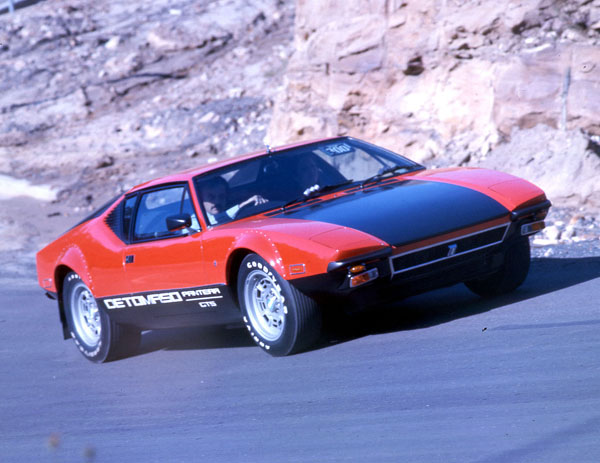Alejandro de Tomaso was a well-known Italian motoring entrepreneur in the 1960s – at one point he was a racing driver. He also built racing cars, although these were generally unsuccessful, as well as high-performance road cars but only in small numbers. Two of his cars, the GT Vallelunga, introduced in 1965, and the open Pampero model of 1966, were forerunners to the elegant Mangusta. The Pantera which followed was based heavily on this car.
The design of this car followed the contemporary mid-engined layout which had been proved in circuit cars and increasingly favoured for road-going supercars. For his Mangusta engine, de Tomaso stayed with the established Ford 289 V8 as it was cheap, reliable and powerful. This made the car attractive to Ford, who were still developing a ‘performance image’ in the USA and wanted to distribute a GT car that could be produced in reasonable numbers.
As the alliance with Ford became firm, de Tomaso’s design team, headed by Gianpaolo Dallara, laid down a new monocoque design, with a shell of fabricated sheet steel based on a Ghia design. It had subframes to support the engine and rear suspension comprising wishbone and coil spring independent suspension used all round.
A new Ford V8, the 5.7-litre unit introduced in 1969, took the place of the 289 V8. In the base L model this was rated at 246kW in ‘European’ form and 230 kW when US emissions ancillaries were added. It drove through a ZF five-speed gearbox. Respectively, the two versions of the engine were claimed to have top speeds of 274 km/h and 212 km/h, however in fact actual performance was somewhat short of those figures. The Pantera was officially launched in 1970, and although it was well received sales never remotely justified the original 4000 per annum production target. Certainly from 1974 de Tomaso did not even claim a four-figure annual production.
In 1971 de Tomaso announced an ambitious racing programme, backed by Ford, and with competition engines that were specially prepared to produce around 298kW. However, these fell short of their expected performance with the best result in the Monza 1000 km race, where one Pantera finished in fifth place.
As a road super car the Pantera survived, mechanically it was a good performer but as a road car it was not all that comfortable. In its lifetime it was occasionally uprated, and in its GTS form it sprouted bulges and a prominent rear wing, but these were quite unnecessary as the car’s handling was always good. The Ford support ended in 1974, and when production of the US-sourced V8 ceased de Tomaso turned to Ford Australia for a 224kW alternative. Production was finally moved across Modena to a more modest factory, where only a few cars continued to be built each year until production was finally phased out.









